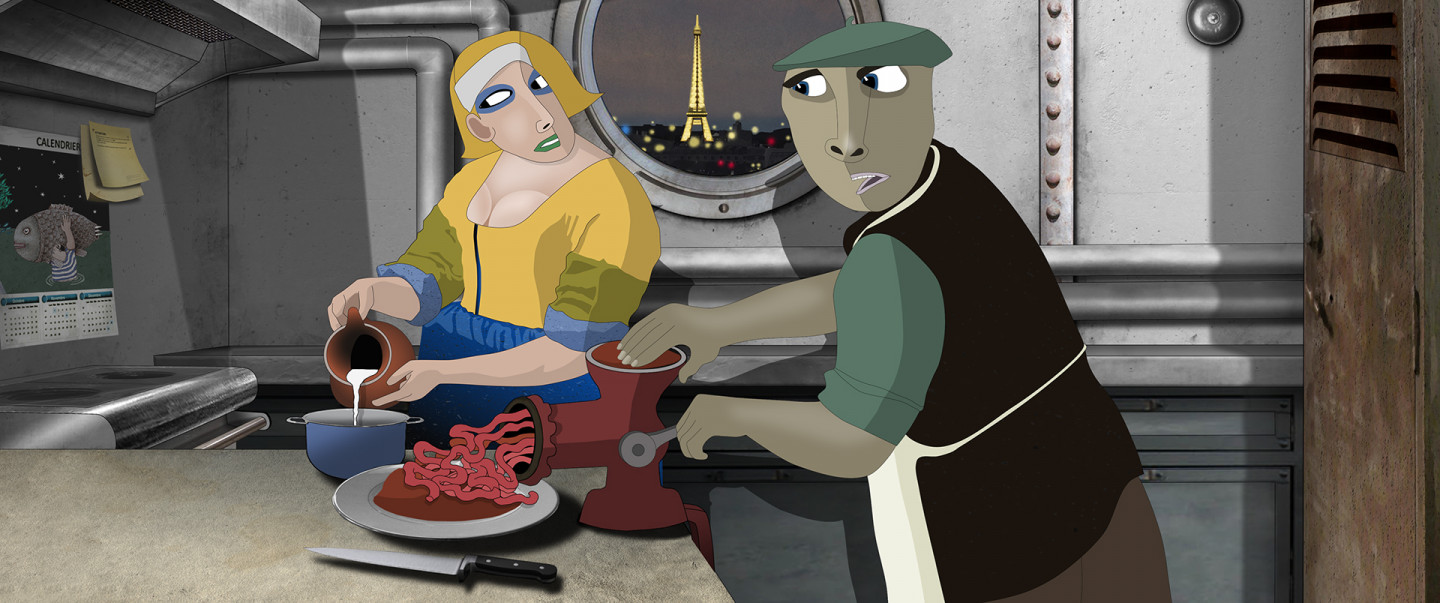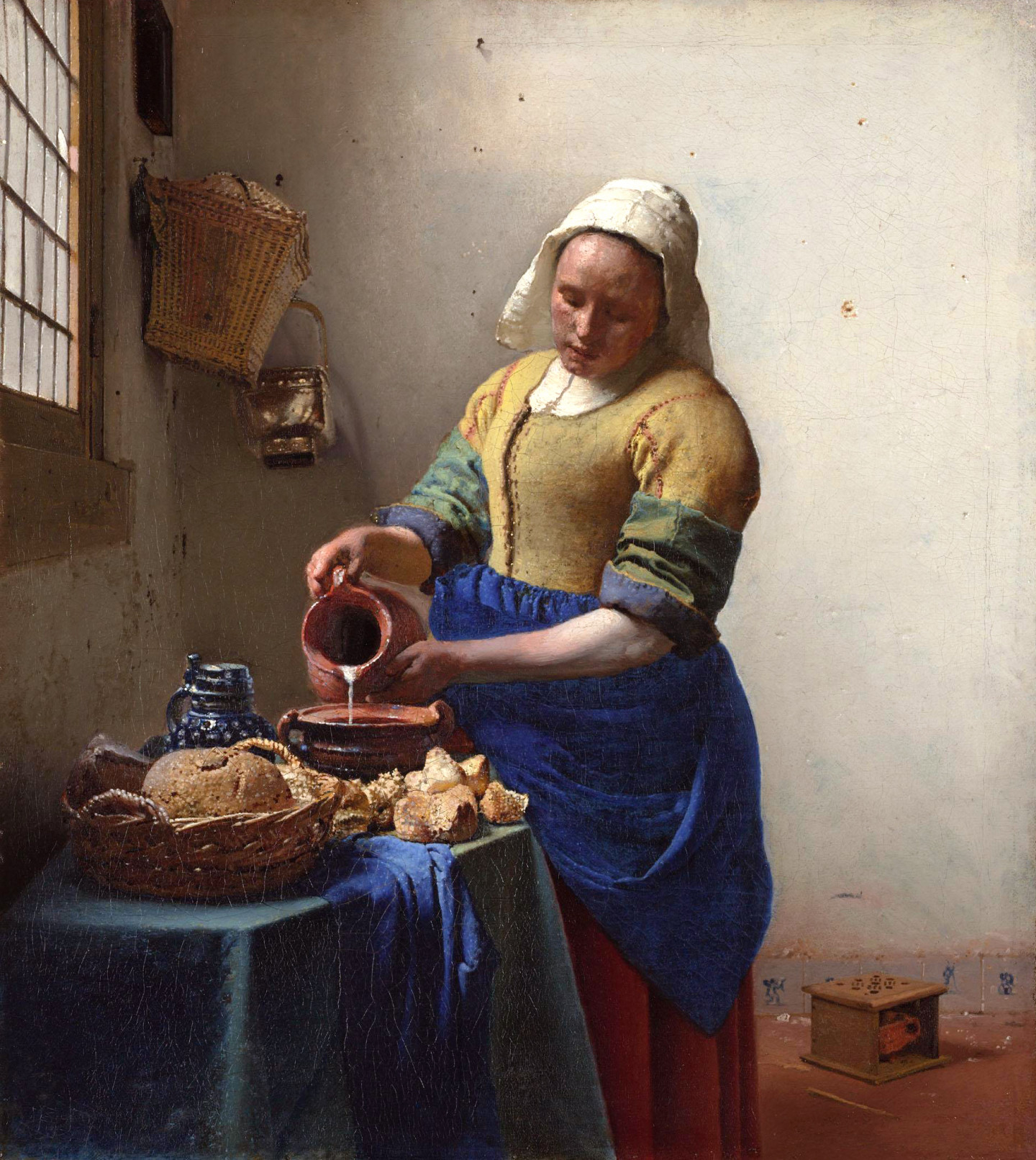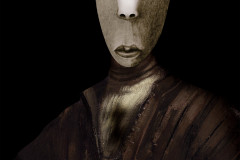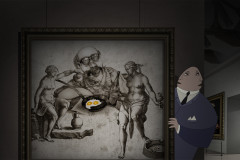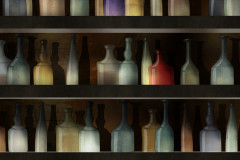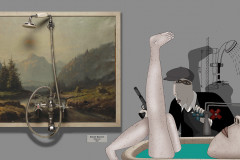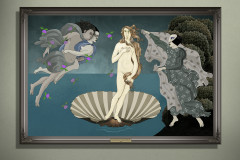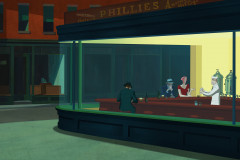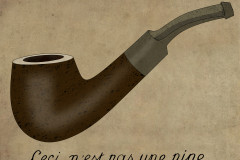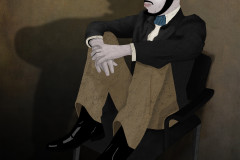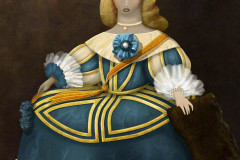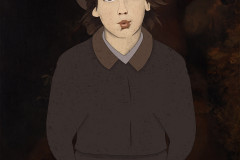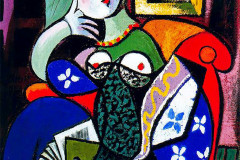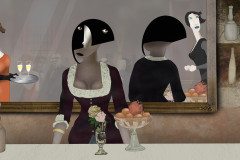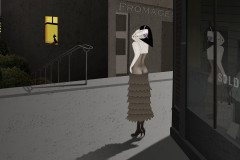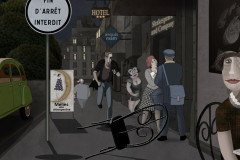Vermeer, Johannes (1632-1675): Tejet öntő nő, 1658 k. (olaj, vászon, 45,5 x 41 cm), Amszterdam, Rijksmuseum. Vermeer a holland festészet „arany évszázadának” nevezett 17. sz. egyik legkiemelkedőbb festője, elmélyült hangulatú életképek alkotója. Egyik leghíresebb munkája ez a kis konyhai életkép, amely a Ruben Brandtban egy Szajnán álló hajó konyhájába van helyezve, a lány és a mellette húst daráló férfi mellett is elrohan Mimi és az őt üldöző Kowalskí. Reméljük, a lány nem önti mellé a tejet, ahogy felnéz a lármára...
Vermeer életképei nem az eseménydússágukról híresek, ellenkezőleg: általában csupán egy alakot látunk képein, jellemzően balról, az ablakból jövő fény által megvilágítva, valamilyen egyszerű cselekvés közben. Ezen a képen például a lány teljes figyelmét a kancsóból a tálba csorduló tejnek szenteli, mindösszesen ennyi történik a képen. És tényleg szinte megszentelődik ez a hétköznapi, rutinszerű cselekedet, – mintha megállna az idő, koncentrált csend, valamint a fények és színek gyönyörű játéka lengi be a képet. A festő figyelme minden apró részletre kiterjed: az egyik kitört kis ablakkockára, az asztalon sorakozó cipók ropogós héjára, a különböző anyagú tárgyakon különféleképpen megcsillanó fényre. A ragyogó sárgák és kékek a lány szoknyájának pirosával kiegészülve élénken ragyognak fel a fehér fal előtt, amely a művészettörténet egyik „legelevenebben” megfestett fehér fala – repedésekkel, lyukakkal, kopásokkal, foltokkal, a falba vert szög árnyékával – senki se mondja, hogy unalmas dolog a falat bámulni! Már ezért megéri Amszterdamba utazni!
Johannes Vermeer (1632–1675): The Milkmaid, c. 1658
Oil on canvas, 45.5 × 41 cm
Rijksmuseum, Amsterdam
Vermeer was one of the most outstanding painters of the Dutch "Golden Age" in the 17th century, known for his intimate, quietly atmospheric genre scenes. The Milkmaid is one of his most famous works—a small kitchen interior that appears in Ruben Brandt, Collector, placed in the galley of a boat on the Seine, where Mimi and her pursuer Kowalski rush past the milkmaid and a meat-grinding man. Hopefully, the maid doesn't spill the milk when she looks up at the noise.
Vermeer’s genre scenes are not known for their dramatic action—on the contrary: his paintings typically depict a single figure, most often a woman, engaged in a simple task, usually illuminated by soft daylight coming from a window on the left. In this case, the young woman is entirely focused on pouring milk from a jug into a bowl. That’s all that happens. Yet the moment becomes almost sacred: silence, stillness, and the beautiful interplay of light and color transform the ordinary into something timeless and profound.
Every detail is rendered with remarkable precision—from the rough crusts of bread on the table to the way light plays across various surfaces, to the wall with its cracks, stains, nail holes, and even the faint shadow cast by a single nail. The palette is luminous: vibrant yellows and blues, balanced by the muted white of the wall and the earthy red of the skirt. That humble wall is one of the most famously "alive" surfaces in all of art history.
The painting elevates a mundane domestic act into a scene of deep harmony and introspection, embodying the ideals of Dutch bourgeois life. It is rightly considered one of the most beloved and reproduced paintings in the world—and in the film, one of the most memorable art references.






